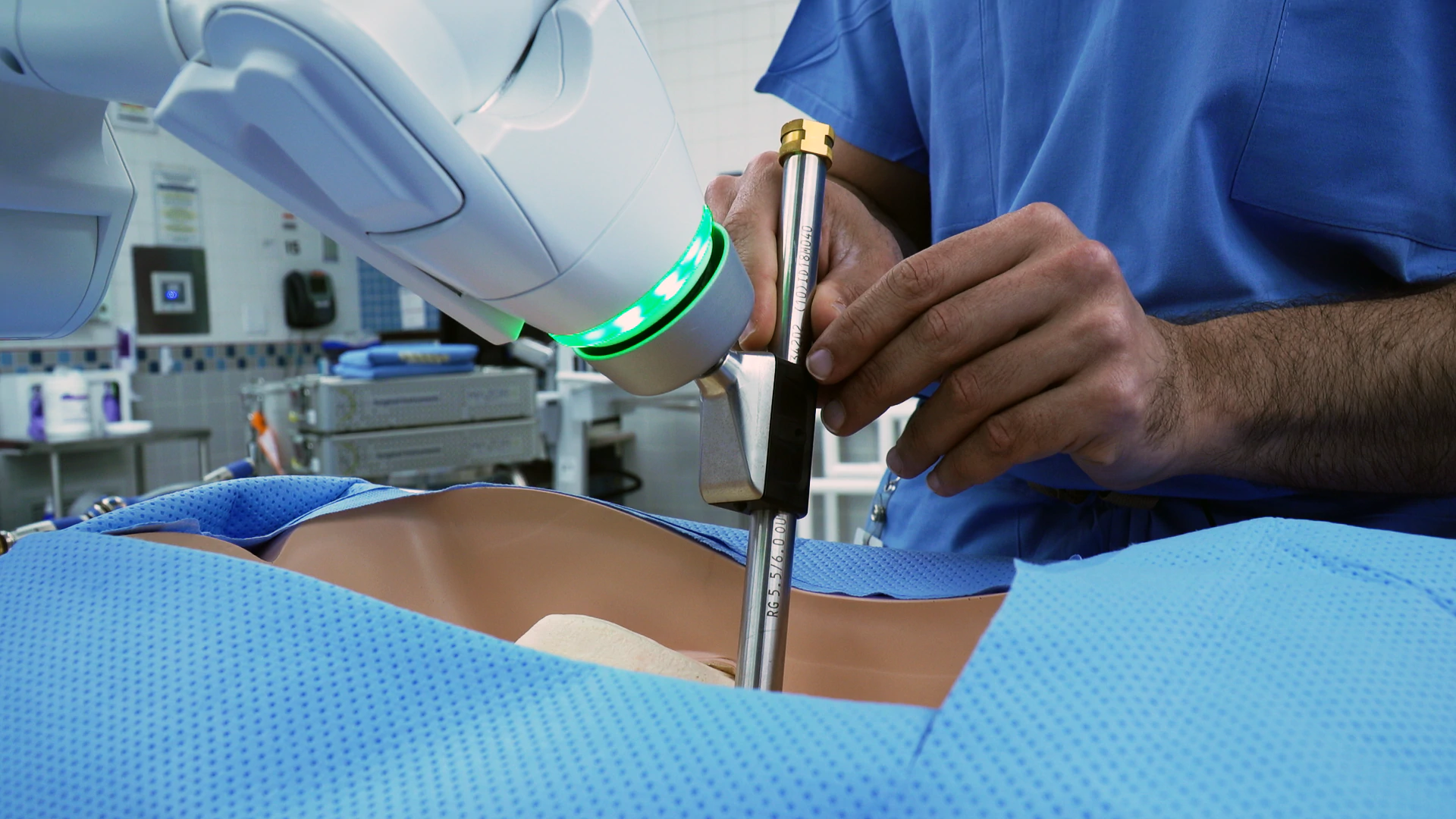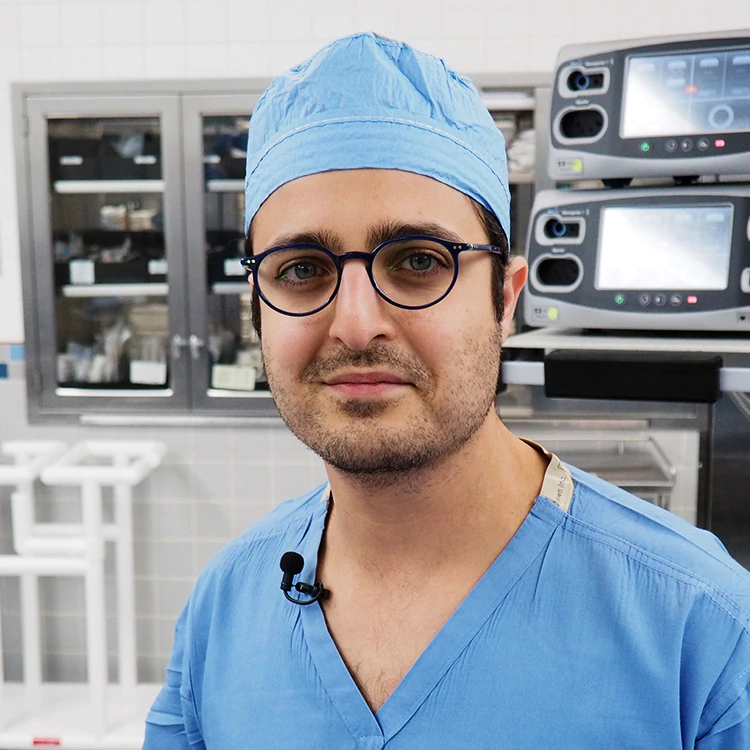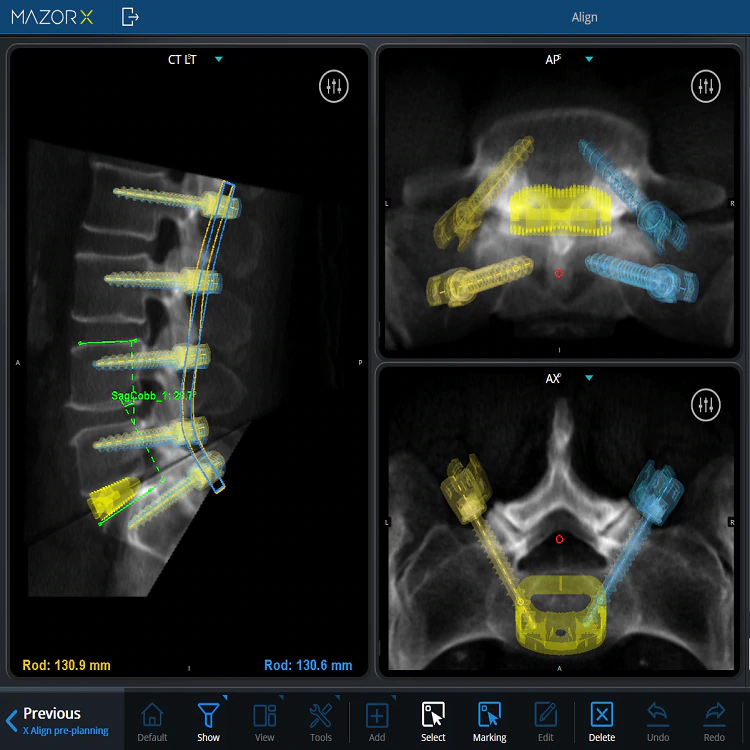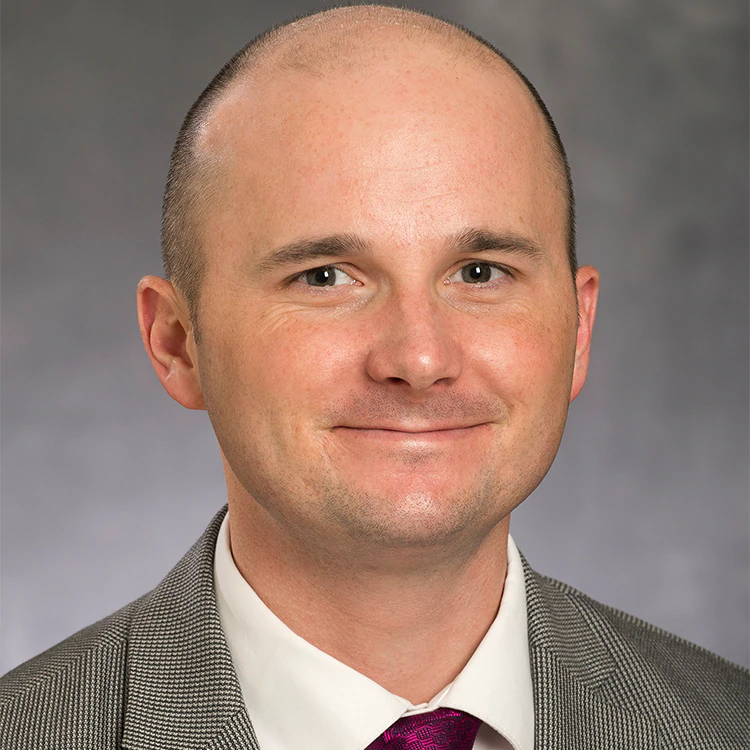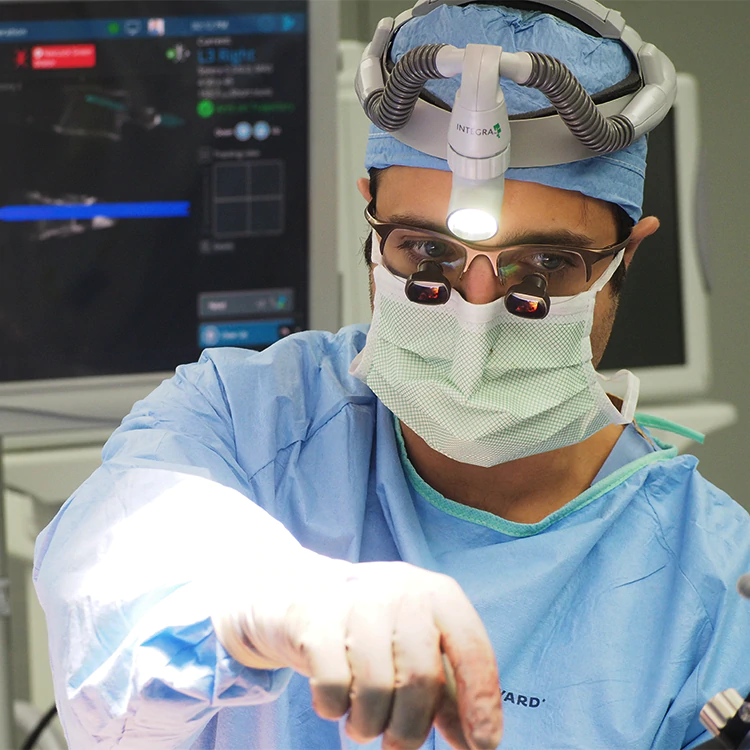When Precision Is Everything
Surgical Synergy from Medtronic helps take spine surgery to a new level.
Nothing is more important to spine surgeon Dr. Eiman Shafa than precision.
“Patients place a great amount of trust in me to make them feel better,” said Dr. Shafa. “Anything I can do to make myself even a fraction of a percent more accurate, I want to do that.”
He’s getting some very high-tech help from Surgical Synergy.
Surgical Synergy integrates several Medtronic technologies in the operating room, helping spine surgeons perform certain procedures with more precision and predictability. See how Surgical Synergy helped spine patient Pam Muldoon.
"Surgical Synergy is the first meaningful and sustainable competitive differentiation in the spine industry that we’ve seen in the last decade. This is something that we believe will define the industry," said Geoff Martha, executive vice president and president of the Restorative Therapies Group at Medtronic.
Dr. Shafa’s team at the Twin Cities Spine Center in Minneapolis is using the Mazor X Stealth Edition, a system that helps surgeons see in real time how they are navigating through a procedure. At the same time, robotic assistance allows them to place screws and implants precisely where they want them.
“The reproducibility that I get with robotics is much greater than I was able to achieve using freehand techniques,” Dr. Shafa said. “I think, without question, the use of the robotic system makes me a better surgeon.”
I think, without question, the use of the robotic system makes me a better surgeon.
Dr. Eiman Shafa, Twin Cities Spine Center, Minneapolis
PRE-PLANNING PROCEDURES IS KEY
Surgeons can upload pre-op images, such as CTs and O-arm™ scans, into the system, where proprietary algorithms assist them in pre-planning the surgery. Surgeons can then develop a blueprint for the exact placement and depth of an implant and make it specific to a patient’s anatomy.
When it’s time for the procedure, the system helps Dr. Shafa execute his blueprint to plan.
“The ability to map out a procedure in advance, program it specifically for an individual patient, and then execute it so precisely is one of the greatest leaps that I’ve experienced in my practice thus far,” said Dr. Shafa.
Medtronic believes that Surgical Synergy – this integration of planning, navigation, and robotic assistance – can change the landscape of spine surgery.
“I think it’s a seminal moment in the spine space,” said Carlton Weatherby, vice president of Surgical Synergy for the Restorative Therapies Group at Medtronic. “This technology allows us to transform spine surgery and make the results more accurate, predictable and reproduceable.”
You’ll see lower costs for individuals, you'll see more efficiency for the health system, and you’ll see the overall quality of care for patients going up.
Kyle Grunder, Director, Spine Clinical Services, Allina Health
IMPROVING SURGERY FOR PATIENTS AND PROVIDERS
Research has found several potential advantages associated with robotic-assisted, minimally invasive surgeries compared to open freehand procedures, including:
- Increased accuracy of screw placement.1
- Reduced blood loss, shortened hospital stays, reduced chances of infection, reduced complications, and lowered hospital costs.2,3,4
Allina Health in Minneapolis is one of the leading spine care providers in the country and recently added a Mazor X Stealth Edition system. Allina analyzed its spine surgery data and concluded that adding Mazor X Stealth has the potential to:
- reduce post-operative complications
- improve the accuracy of screw placement
- reduce the time of typical spine surgeries
“When you add those three things together, naturally you'll see cost savings,” said Kyle Grunder, director for spine clinical services at Allina. “You’ll see lower costs for individuals, you'll see more efficiency for the health system, and you’ll see the overall quality of care for patients going up.”
Weatherby and Grunder say spine surgery is just the beginning for robotic-assisted procedures. “I see the next evolution of robotic-assistance at Allina being in neurosurgery,” Grunder said. “Some of our neurosurgeons are already looking at this technology to see how it could impact care there."
Dr. Shafa says he has already used the Mazor X Stealth system to treat some of the most complicated spine cases of his career. In a profession where success or failure can sometimes come down to a millimeter or less, he’s already seeing positive results.
“For me to be able to tell my patients there is a tool we can use that without question provides a more predictable procedure is a very gratifying feeling.”
REFERENCES
https://journals.lww.com/spinejournal/Abstract/2000/03010/Comparative_Results_Between_Conventional_and.12.aspx
2 Wang, M. et al. An Analysis of differences in the acute hospitalization charges following minimally invasive versus open posterior lumbar interbody fusion. J Neurosurg Spine. 12:694-699. 2010.
3 O’Toole, J. et al. Surgical site infection rates after minimally invasive spinal surgery. JNeurosurg Spine. 11: 471-476. 2009.
4 Allen. T. et al. The Economics of Minimally Invasive Spine Surgery. The Value Perspective. Spine. 35:26S, pp S375-S382.
IMPORTANT SAFETY INFORMATION
It is important that patients discuss the potential risks, complications, and benefits of these products with their doctor prior to receiving treatment, and that they rely on their physician's judgment. Only a doctor can determine whether patients are suitable candidates for treatment using these products.
Results may vary. Keep in mind that all treatment and outcome results are specific to the individual patient.
A prescription is required. For further information, please contact Medtronic at 877-242-9504 or visit www.medtronic.com/surgicalsynergy.
